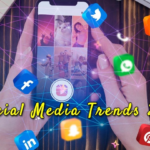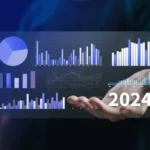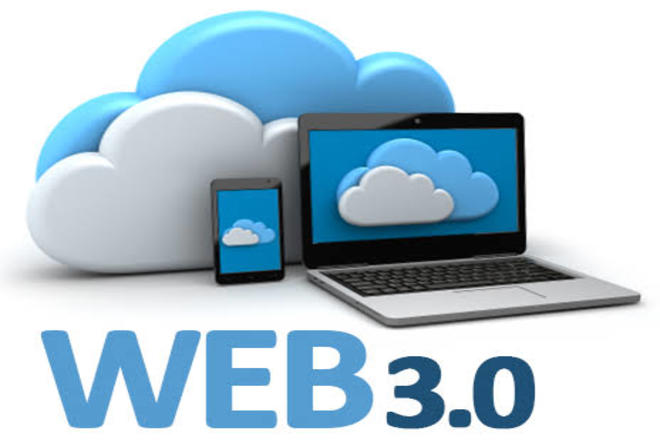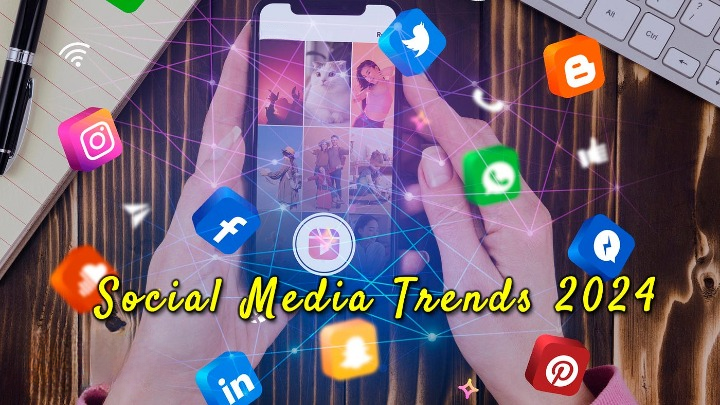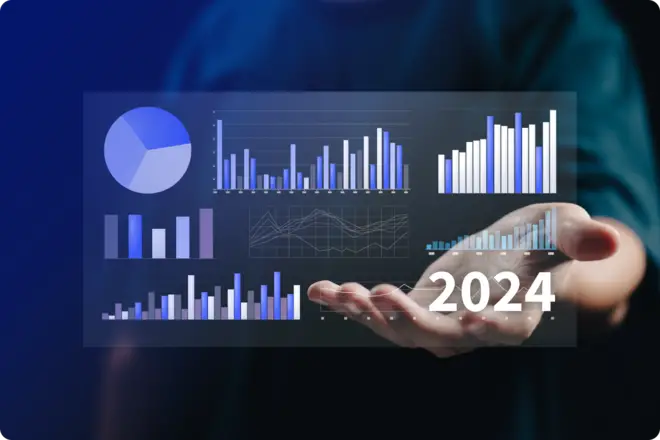Can you imagine life without the internet these days? Yes, the Internet has become a critical component of everyday life. The outbreak of the global pandemic has forced human society to have a greater dependency on the online world. Our occupational, educational, financial, communicative, and recreational activities are all governed and controlled by the Internet. As the reliance on the web has grown considerably in the last three decades, the web itself has undergone a sea of changes. The next-generation web evolution is knocking on our doors. What is Web 3.0 and what it is all about?
We have already passed through two major Internet interactions- Web 1.0 and Web 2.0. Web 1.0 represented the Internet’s static “read-only” webpages created by the limited number of participants. Of course, it was a major breakthrough that allowed the users to access the published content. Here, the users can only read and browse the content whereas they can’t interact. As there was no search engine, the browsing of the World Wide Web wasn’t a straightforward practice as we see today.
Web 1.0 was the single way of communication from the publisher of the content to the user over the Internet. With the advent of Web 2.0 in 2000, it gave greater participation and user interaction. Users have the opportunity to create their own accounts across various applications. That means they have their own unique identities on the web.
Web 2.0 opened up enormous opportunities for businesses to market their products and services, particularly e-commerce. It also means that anybody can create content from any part of the world and publish it to be viewed worldwide. How can anyone forget the role of Web 2.0 in the arrival of popular social media platforms like Facebook, Twitter, LinkedIn, Instagram, YouTube, etc? The rise of JavaScript, HTML5, and CSS3 technologies was considered landmark achievements in this era. Now, it’s time for Web 3.0.
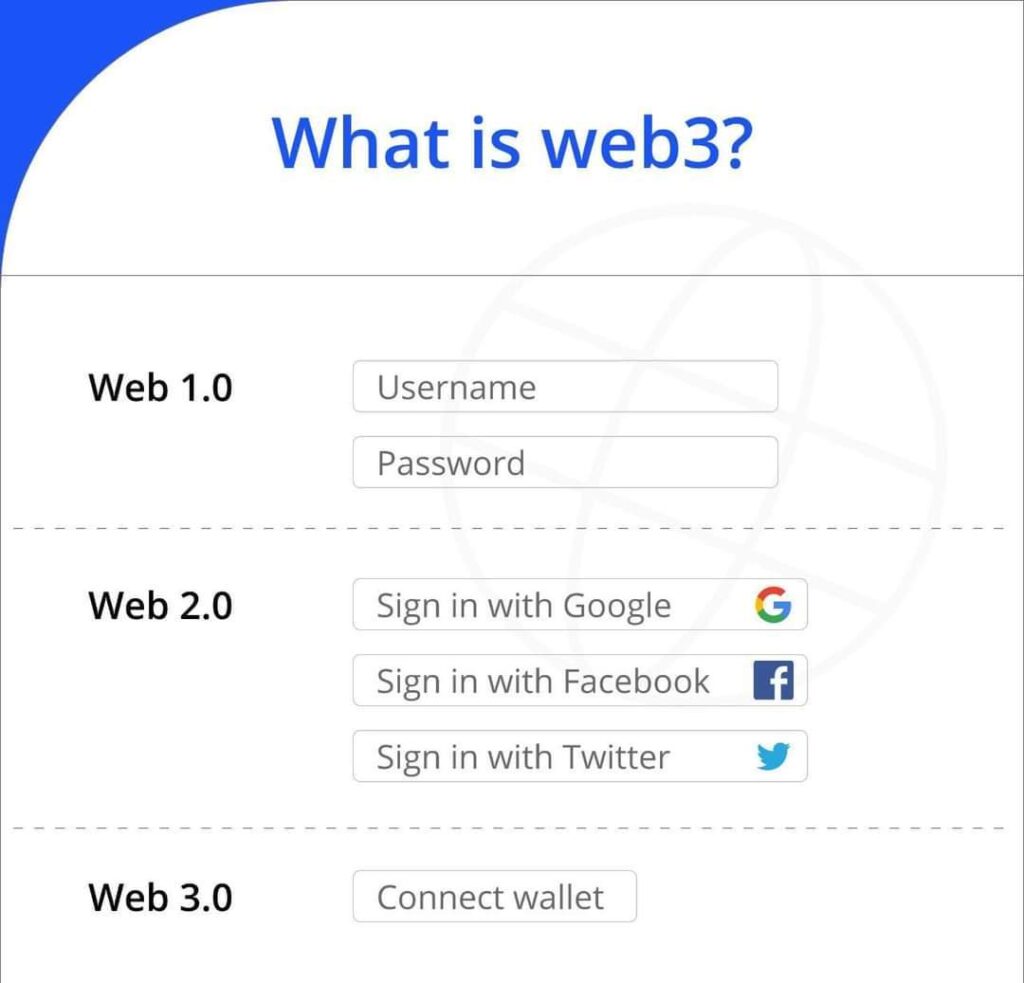
How will Web 3.0 change our lives?
There is no exact definition of Web 3.0 yet formed but there are a few features of Web3 that will take us closure to Web3. People would be wondering “what is Web 3.0” and how it will change your day-to-day life. For example, you’re driving the car and would want to watch a movie or eat your favorite food, then you will simply ask your automotive assistant to watch a movie or eat the food you like. The search engine assistant embedded in your car will come up with a personalized response involving your location, suggesting the nearby cinema and restaurants with the data taken from social media reviews.
What is Web 3.0?
Web3 is a new buzzword over the internet these days. The main idea behind this is the democratization of the web world rather than corporatization.
Web3 or Web 3.0 is defined as the 3rd generation internet services for websites and web applications. It focuses on a machine-based understanding of data that involves AI-based semantics, blockchain-based decentralization, and AR/VR-based immersiveness. These three technologies will come together to provide more transparent, intelligent, connected, open, and socially efficient internet experiences.
The semantic web can be considered as an extension of the World Wide Web as the standards set by the World Wide Web Consortium (W3C). The main objective of the Semantic Web is to make the Internet data machine-readable. It makes strong decentralized programs that are user-centric and provide decentralized power to the individuals.

Features of Web 3.0
- Artificial Intelligence: By combining the AI with natural language processing capability, the Web 3.0 will ensure that the computers would understand the information just as the humans do and provide the faster & more relevant results. They will turn more intelligent to deliver user needs.
- Semantic Web: The next generation of the web will come up with Semantic web and improve the web technologies so that it generates shares and connects the content via search and analysis based on understanding the meaning of words instead of keywords and numbers.
- 3D Graphics: The three dimensional designs are being used immensely in websites and services as part of Web 3.0 technology. Computer Games, E-commerce etc are all examples of 3D Graphics.
- Connectivity: With Web 3.0, the data will be more connected because of semantic metadata. It will take the user experience to the next level leveraging all the available information.
- Ubiquitous: Content can be accessible via multiple applications as every device is connected to the Internet (IoT) and can be used anywhere.
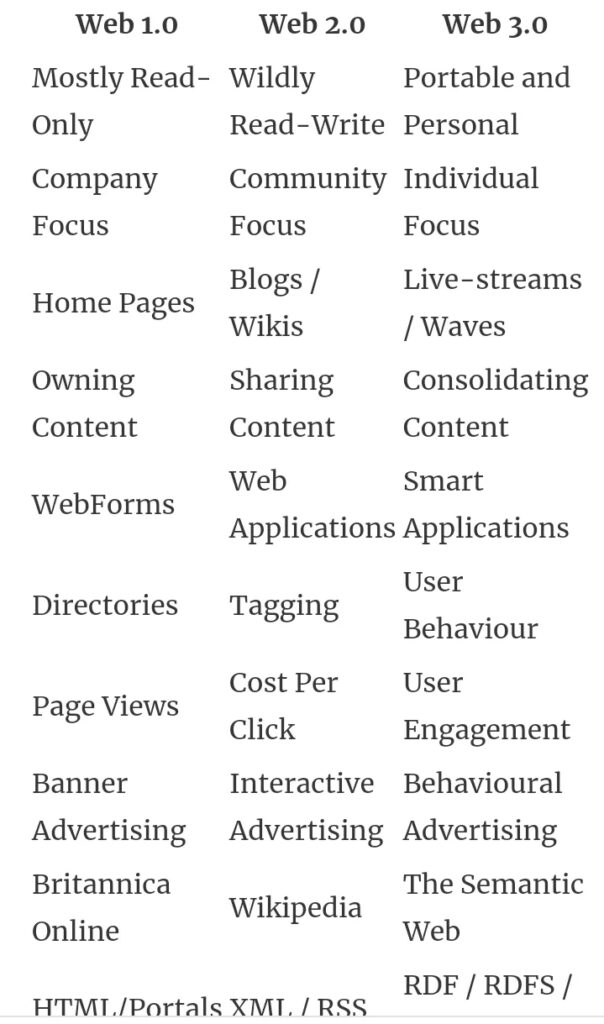
Along with the components of Web 2.0, the Web3 includes features like semantic Web, social Web, and 3D aided and enabled technologies. The features like RDFs (Resource Description Frameworks), Ontology web language, and SPARQL query language.
Does Web 3.0 a reality?
There are a few characteristics and traits involved in Web3 in addition to semantic architecture. True ubiquity is a feature that we have already made considerable progress on as Internet accessibility is universal and ubiquitous across areas, devices, and networks. Today, we are accessing the Internet mainly via PCs and Smartphones or industrial handhelds. With Web3 technologies, the Internet can be accessible via wearable, smart cars, smart appliances, AR/VR gear, IoT interfaces, and many more. This would demand a new generation of web browsers.
There would be a greater dependency on 3D graphics. This characteristic is forcing some people to equate Web3 with the spatial web that brings together the physical layer, digital information layer, and spatial interaction layer to provide the Internet via new and non-text channels. Web3 primarily involves voice and AR/VR worlds, particularly metaverse where there will be power-rich interaction between the users and online service providers.
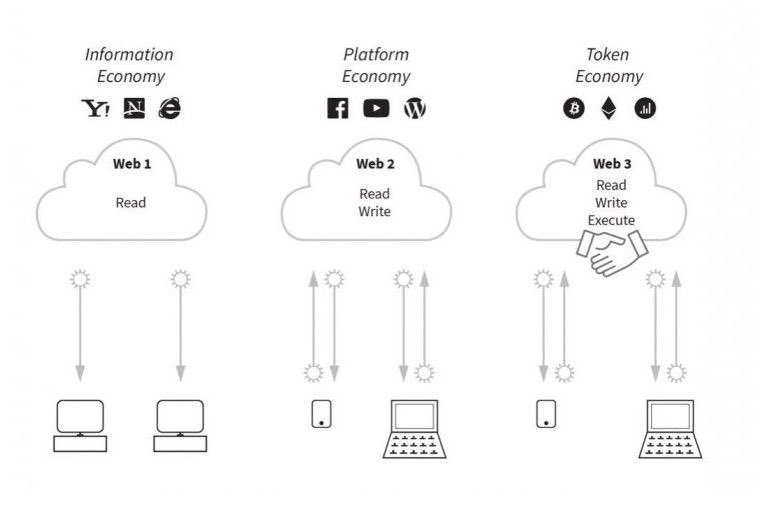
Today, the Internet is mainly controlled by a few tech giants and conglomerates who behave as the gatekeepers of data and algorithmic processes. This Web3 technology would be based on open source code and architecture that can be used, modified, monetized, and extended by anyone without any significant restrictions. The open-source architecture will bring greater accountability because there would be more peer reviews.
Web 3.0 will provide better incentives to content creators as there are few checks and balances on how online creators would be compensated for their work. Currently, only a small percentage of creators are receiving a disproportionate share of incentives. As the concept of user incentivization is almost non-existent, this might reward them with tokens or cryptocurrency for their content to keep things transparent.
Finally, Web 3.0 will bring Decentralization & Interoperability as it isn’t controlled by any single or group of organizations and is fully decentralized by blockchain architecture. According to Berners-Lee’s vision, the users, creators & every online entity will exist on a connected spectrum via a specially designed protocol.
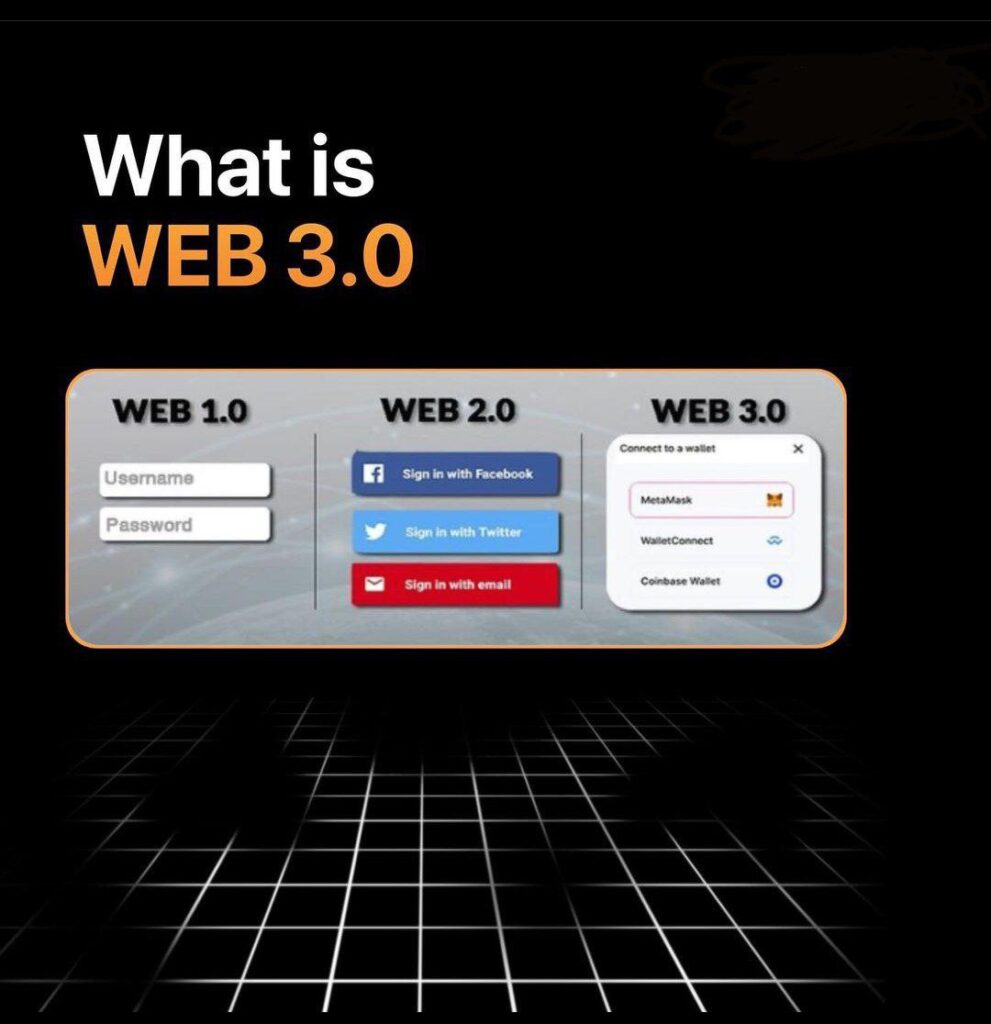
How will you explain Web 3.0?
When someone asks “What is Web 3.0”, the answer will be the future version of the Internet services and it is based on public blockchains. The blockchain is a record-keeping system, basically used for facilitating cryptocurrency transactions. The best part of Web3 is that it is decentralized. That means the consumers will be able to access the internet services directly rather than by companies like Google, Apple or Facebook, etc who govern sections of the internet.
Web 3.0 needs no “permission” that the central authorities will not decide who gets what services and what it will eradicate the role of intermediaries for virtual transactions occurring between parties. These intermediaries and agencies collect a huge amount of data while providing services that consumers need. Web3 will technically protect user privacy better.


